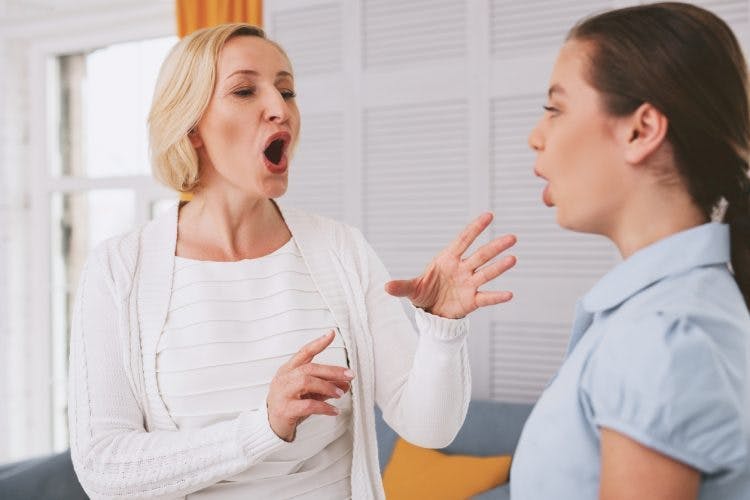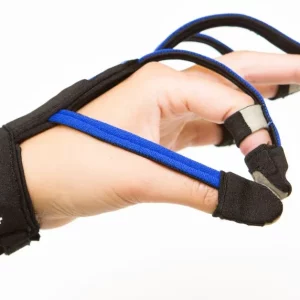Speech therapy exercises can help individuals improve their ability to communicate and produce language. They can be especially helpful after a neurological injury, such as a stroke. Depending on which area of the brain was affected by stroke, various parts of speech may be affected. Speech therapists can provide personalized exercises focused on helping individuals recover their speech production skills.
This article will cover the many benefits of speech therapy exercises, and will also include a few of the best speech therapy exercises and techniques. While working with a speech therapist is the best way to learn which speech therapy exercises would be most effective for a specific individual, the exercises outlined here are a great starting point.
Please use the following links to jump directly to any section of this article.
- Importance of practicing speech therapy exercises
- 10 of the best speech therapy exercises
- What to do when unable to speak at all
Importance of Practicing Speech Therapy Exercises
Speech language pathologists, also referred to as speech therapists, are experts in the areas of communication, cognition, and eating/swallowing rehabilitation. Following a neurological injury, such as stroke, these functions may be affected.
While this article primarily focuses on speech therapy exercises to improve speech production, many of the same exercises can also help individuals recover other communication, cognition, or eating/swallowing skills. This is because speech production involves cognitive components, such as word retrieval skills, as well as oral motor mobility, strength and coordination.
There are many disorders that can affect speech production, including aphasia and apraxia of speech. These disorders occur when an area of the brain involved in the production of speech becomes damaged after a neurological injury. For example, expressive aphasia is caused by damage to the language center of the brain. On the other hand, apraxia of speech can be caused by damage to the cerebellum or other areas of the brain involved in motor coordination.
Speech therapy exercises help improve language skills by sparking neuroplasticity, or the brain’s ability to rewire itself. Through neuroplasticity, healthy areas of the brain can take over the function of verbal expression. Repetitively practicing speech therapy exercises on a regular basis is the best way to promote neuroplasticity and recover the ability to produce speech.
10 of the Best Speech Therapy Exercises
Ideally, individuals having difficulties with speaking should work with a speech therapist to determine which exercises are most appropriate for them. With that in mind, the following speech therapy exercises are some of the most common exercises recommended by speech therapists. These exercises can be a great starting point for recovering one’s speech while waiting to start therapy, or may be used as a resource for those looking to supplement therapy sessions.
Completing speech therapy exercises in front of the mirror is often most effective. This is because the visual feedback from the mirror is not only motivating, but can also help individuals ensure they are completing the exercises accurately.
Here are some of the best speech therapy exercises to try at home:
1. Tongue In-and-Outs
Stick the tongue out as far as possible and hold it for 2 seconds, then pull it back in. Hold for 2 seconds, and repeat. This helps train the tongue to move in coordinated patterns, which will help improve speech production.
2. Side-to-Side Tongue Movements
For this speech therapy exercise, open the mouth and move the tongue to touch the right corner of your mouth. Hold for 2 seconds, then touch the left corner of the mouth. Hold for 2 seconds, and repeat.
3. Up-and-Down Tongue Movements
Open the mouth and stick out the tongue. Then, reach the tongue up toward the nose. Hold for 2 seconds, then reach the tongue down toward the chin. Hold for 2 seconds, and repeat.
Want 25 pages of stroke recovery exercises in a PDF? Click here to download our free Stroke Rehab Exercise ebook now (link opens a pop up for uninterrupted reading)
4. Smiles
The act of smiling involves many facial muscles. As such, smiling is a simple speech therapy exercise that can improve oral motor skills. Practice smiling in front of a mirror. Smile for 2 seconds, then relax, and repeat.
Following a neurological injury such as stroke, many individuals may have trouble moving one side of their face. While practicing smiling in the mirror, try to make the smile as symmetric as possible.
5. Lip Puckers
Start with the mouth relaxed. Then, pucker the lips together as if kissing, holding this position for 2 seconds. Relax for 2 seconds, and repeat. For an extra challenge in motor precision and control, practice puckering as slowly as possible.
After practicing the previous speech therapy exercises focused on motor skills, individuals may be ready to practice the following exercises involving verbalization. If unable to speak at all, individuals may benefit from visualizing themselves practicing verbal exercises to begin to promote brain adaptation and rewiring.
6. Consonant & Vowel Pairing Repetition
Start by writing down which consonants are difficult to speak. Then, one at a time, pair each of these consonants with each of the 5 vowels (a, e, i, o, u). For example, those who have trouble with the “r” sound can practice saying “ra, re, ri, ro, ru” repetitively. For an extra challenge, try this with all of the consonants.
7. Sentence Production
Individuals with neurologically-based coordination disorders such as apraxia of speech have no trouble with the cognitive components of language production. However, their ability to move the lips and tongue is impaired.
Therefore, reading aloud can provide those with apraxia of speech an opportunity to practice speaking. While this is also an excellent exercise for individuals with aphasia, it may be very frustrating at the beginning stages of recovery.
Start small by practicing only a sentence or two for short periods of time. Then, increase the number of sentences or time spent practicing for a further challenge.
8. Phonological Processing
Phonology refers to the study of speech sound patterns. Speech therapy exercises that focus on phonology can also be beneficial for helping individuals improve their speech production skills.
For this exercise, ask a family member or caregiver to state various words. Then guess how many syllables are in each word they say. Family members or caregiver should always give feedback as to whether the answer was correct or incorrect. The feedback is an essential part of what makes this exercise therapeutic.
9. Word Games
Playing word games can be a great way to integrate practicing speech therapy exercises into a fun, engaging activity. Although not all word games require verbalizing words, individuals can choose to simply work on the cognitive components of language or adapt the game to include speaking.
For example, games such as Boggle, Scrabble, or Bananagrams involve cognitive language skills, such as word finding and memory. Rather than simply creating words during these games, individuals could choose also to state each word made to practice speech production skills as well.
Games like Pictionary, 20 Questions, or Go Fish require individuals to speak throughout the game. This can be challenging initially, but is an excellent way to make practicing speech therapy exercises more fun. For those looking for an independent activity, games such as word searches or crossword puzzles can also be effective options to work on language skills.
10. Speech Therapy Exercise Apps
While the exercises above are a great place to start, they aren’t tailored to an individual’s unique needs. Certain speech therapy exercise apps can adapt to provide exercises appropriate for one’s current abilities and challenges so that individuals can continue to improve.
For example, the CT Speech and Cognitive Therapy App can assess an individual’s problem areas and choose which exercises out of the hundreds built into the app would be most beneficial to promote improvements. While nothing can replace the value of in person, individualized speech therapy, the CT Speech app was designed by speech-language pathologists to provide a better option for individuals to continue working on their speech and language skills at home.
Want to learn more about the CT Speech and Cognitive Therapy App? Get Started Here.
(Link opens a pop-up for uninterrupted reading.)
What to Do if Unable to Speak at All?
Individuals that are unable to talk after stroke generally have sustained major damage to the language center of the brain. Recovery will take more time and effort, but it’s often possible.
While individuals who are unable to talk can still practice oral motor speech therapy exercises, most exercises that require speech production would be considered too advanced for their current ability level. However, singing therapy may be an effective way to regain the ability to produce speech, especially among those with aphasia.
Singing therapy is exactly what it sounds like: practicing singing words rather than speaking them. Individuals find they are often able to verbalize words this way because while speech is a left-brain function, singing is a right-brain function.
Therefore, when aphasia occurs due to damage to the language center of the brain in the left hemisphere, the right side of the brain often remains intact. Singing activates the right hemisphere of the brain, allowing individuals to say words in different pitches and rhythms even when they are unable to speak normally. Many people who had difficulty learning to speak again after brain injury or stroke often have great success with singing therapy.
Want 20 pages of stroke recovery tips in an illustrated PDF? Download our free ebook by clicking here (link opens a pop up for uninterrupted reading)
Understanding the Best Speech Therapy Exercises
Many individuals can benefit from speech therapy following a neurological injury such as stroke. Speech therapy exercises can include cognitive and physical components, both of which can be effective depending on the speech and language deficits involved. Even if individuals are unable to speak at all, they can still benefit from working with a speech therapist using singing therapy to begin their recovery journey.
While there are hundreds of speech therapy exercises, the best exercises are the ones that are practiced repetitively and consistently. This sparks neuroplasticity, which is how the brain adapts and recovers. One of the best ways to do this is continuing therapy at home through games or apps such as the CT Speech and Cognitive Therapy App.
Regardless of which areas of speech have been impacted, speech therapy exercises can be a great way to start on the road to recovery. Consider trying out the speech therapy exercises listed above and/or working with a speech therapist to retrain the brain and regain the ability to speak effectively again.
Want more free exercises to help work on your speech at home? Download our FREE eBook “15 Effective Speech Therapy Exercises for Home [pdf]”!










